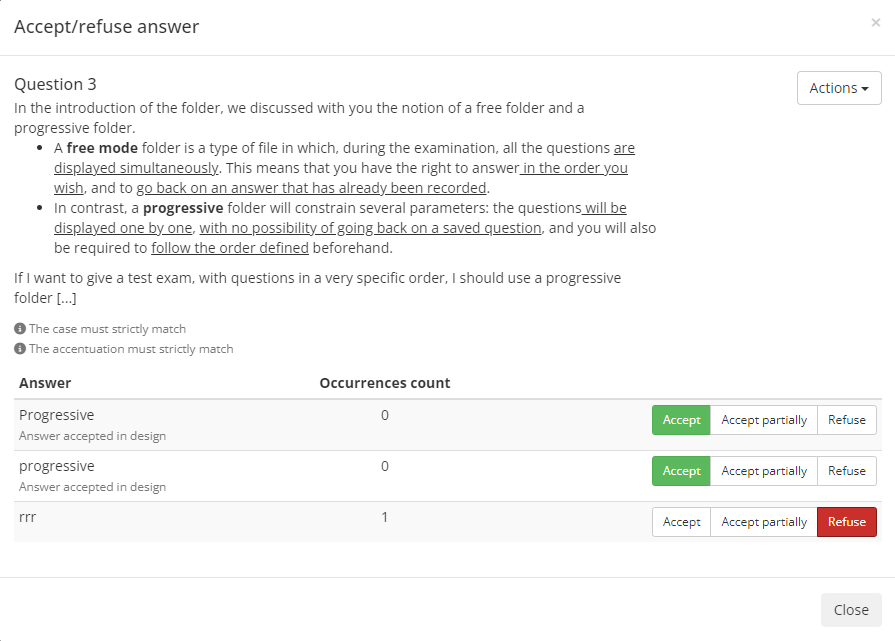You are a teacher/trainer and are looking to correct the Short Answer questions assigned to you on THEIA. On this page you will find all the information you need to understand and make the best use of your platform’s correction functions.
1. What is a Short Answer question ?
A Short Answer question is an open-ended question consisting of :
- A statement.
- One or more expected answers (word or group of words) which will be used for semi-automatic correction by comparison with the learner’s answer.
- Possibly an answer key (or a correction comment visible on the corrected papers and in the correction interface).
From the learner’s point of view, a Short Answer question is a simple text field with no formatting options and a maximum length of 255 characters.
This type of question uses a semi-automatic correction system. This means that the correction will be automatic and the student will receive all the points allocated to the question if the answer given is the one specified in the question design. If this is not the case, a marker will be called in to read the answers given and decide on their validity. This is where you can come in.
To find out more about designing Short Answers questions, you can consult the tutorial “The different types of questions”.
2. The correction interface
You can access the correction of short answer questions from the Admin interface. Go to the relevant exam and click on the “Short Answer” tab.
Please note: the marking interface available in your interface choices does not apply to short answer questions, only to essays. To mark short answer questions you will need to use the admin interface.

In this area, you can see at a glance the status of the answers given by students to this question. Take the example below:

Here, we can see that the first question (“short answer ignore case”) obtained :
- 1 answer accepted – this answer corresponds perfectly to what was defined as a “valid” answer when the question was designed;
- 1 answer partially accepted – the marker decided that this answer was not entirely wrong, but that it could not be awarded full marks to the student who gave it. The student will therefore be awarded 50% of the maximum mark obtainable;
- 1 answer refused – the student will receive no points;
- 0 answer awaiting correction.
Pending answers are all answers provided by students that do not correspond to the answers provided by the question designer. These are the ones that require your intervention.
3. Correct pending responses
To correct pending answers, you can click on the “Correct” button next to each question. Once you have done this, you will be taken to a screen that summarises the answers received and allows you to decide on their status. Let’s take a closer look at the question we used as an example earlier:

- Both “Progressive” and “progressive” are considered valid.
- The answer given “rrr” was refused.
You can change the validation status for each answer by clicking on the corresponding button. This will be done en masse by type of answer provided and not by student, which allows you to correct quickly and efficiently, particularly in the case of large volumes of learners. The exam marks will be updated instantly and all you have to do is continue your correction work on the following questions.
If you want to find out more, have a look at the tutorial below: “Correcting Essay questions”.


